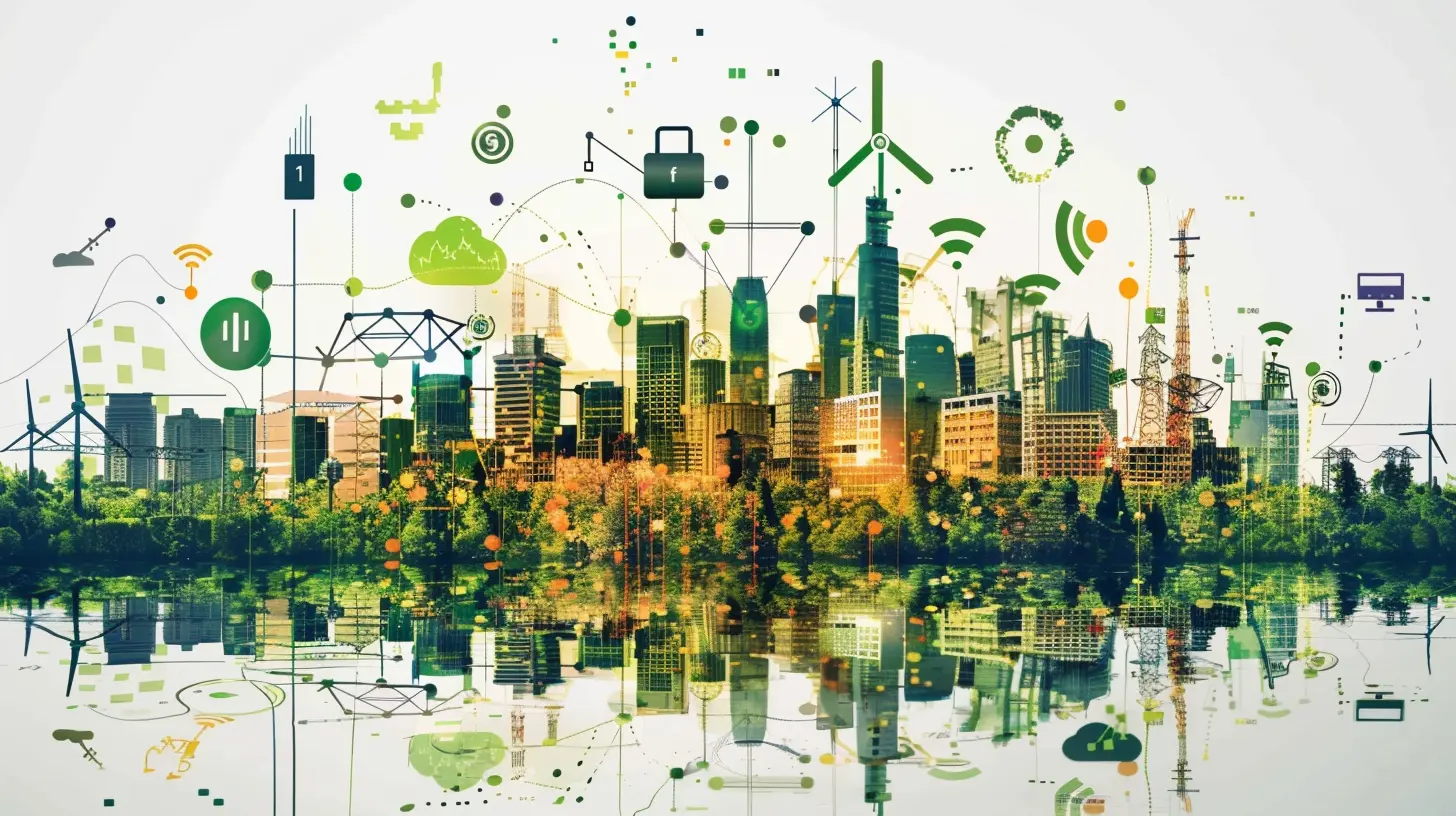The Environmental Impact of IoT: Can It Help Combat Climate Change?
23 November 2025
The Internet of Things (IoT) is transforming the way we live, work, and interact with the environment. Smart devices are being integrated into our homes, cities, industries, and even agriculture. But with climate change becoming a bigger concern every year, can IoT actually help us tackle it? Or does it contribute to environmental degradation?
Let’s dive into how IoT impacts the planet—for better or worse—while weighing in on whether it’s a true ally in the fight against climate change. 
🌍 What is IoT, and Why Does It Matter?
IoT refers to a network of connected devices that communicate and share data without human intervention. Think of smart thermostats, wearable fitness trackers, industrial sensors, and even self-driving cars. These gadgets collect and analyze data to improve efficiency, cut waste, and enhance convenience.But with great connectivity comes great responsibility. The question is: Does IoT do more harm than good when it comes to environmental impact? 
📉 The Dark Side: How IoT Contributes to Environmental Problems
1. E-Waste: IoT’s Growing Trash Problem
Smart devices aren’t designed to last forever. Every time we upgrade to the latest smartwatch or replace outdated smart home gadgets, we’re contributing to electronic waste (e-waste).With billions of IoT devices in use today, that’s a massive pile of discarded sensors, batteries, and circuit boards. And what happens to them? Many end up in landfills, leaching toxic chemicals like lead and mercury into the soil and water.
📌 The fix? Manufacturers need to adopt sustainable designs, focusing on recyclability and longer product lifespans.
2. Energy Consumption: More Devices, More Power
IoT devices may be small, but when billions of them are running worldwide, they consume a LOT of energy. From cloud storage to data processing, all that information needs power-hungry servers to function.Data centers, which store and process IoT-generated data, contribute to around 1% of global electricity consumption—and that number is climbing.
📌 The fix? A shift toward renewable energy-powered data centers and energy-efficient IoT designs could significantly lower this impact.
3. Carbon Footprint of Manufacturing IoT Devices
Before an IoT device even reaches your hands, it goes through energy-intensive manufacturing processes. Mining rare earth metals, assembling circuit boards, and transporting devices globally all contribute to its carbon footprint.Many smart products require lithium-ion batteries, which rely on lithium and cobalt mining—industries notorious for environmental destruction.
📌 The fix? Companies need to prioritize sustainable sourcing, ethical mining, and alternative battery technologies. 
🌱 The Bright Side: How IoT Helps Fight Climate Change
Now, it’s not all bad news. If used the right way, IoT has the power to reduce emissions, cut waste, and make industries greener.Let’s look at the positive impact IoT is already having on sustainability.
1. Smart Energy Management: Cutting Down on Waste
Imagine your home automatically adjusting its heating and cooling based on usage patterns. That’s exactly what smart thermostats like Nest and Ecobee do. IoT-powered HVAC systems analyze data in real-time, optimizing energy use and cutting electricity waste.On an industrial scale, IoT sensors in factories detect machinery inefficiencies, reducing energy waste and carbon emissions. Companies using IoT-based energy management systems have reported a 20-30% reduction in energy consumption—a game-changer in the fight against climate change.
2. Eco-Friendly Transportation: Smarter Mobility Solutions
The transportation industry is a huge contributor to carbon emissions, but IoT is making mobility cleaner and smarter.- Smart traffic management: IoT-powered traffic lights adjust in real-time to reduce congestion, lowering fuel waste and emissions.
- Electric vehicle (EV) optimization: IoT helps monitor EV charging stations, ensuring better energy usage and reducing power grid stress.
- Fleet tracking for efficiency: Logistics companies use IoT sensors to optimize delivery routes, reducing fuel consumption and emissions.
With these solutions in place, IoT is reshaping transportation to be more sustainable and eco-friendly.
3. Precision Agriculture: Sustainable Farming with IoT
Agriculture is a major contributor to greenhouse gas emissions, but IoT is playing a vital role in making farming smarter and more sustainable.- Smart irrigation systems prevent water wastage by analyzing soil moisture levels in real-time.
- IoT-powered drones monitor crops, reducing the need for excessive pesticide use.
- Automated farming equipment ensures efficient planting and harvesting, cutting fuel consumption.
By reducing waste and optimizing resource use, IoT-powered agriculture helps lower the environmental impact of farming while boosting food production.
4. Smart Cities: Greener Urban Living
Cities are responsible for over 70% of global CO₂ emissions, but IoT-based smart city initiatives are changing that.- Smart lighting: IoT-powered streetlights adjust brightness based on traffic and pedestrian movement, slashing energy waste.
- Waste management: Sensors in trash bins notify collection services when they’re full, reducing unnecessary trips and fuel consumption.
- Air quality monitoring: IoT devices track pollution levels, helping policymakers take action to improve urban air quality.
Through these innovations, IoT is making cities cleaner, more efficient, and environmentally friendly. 
🌟 The Verdict: Can IoT Truly Combat Climate Change?
IoT is a double-edged sword. On one hand, the sheer number of devices contributes to e-waste, energy consumption, and resource depletion. But on the other hand, it's also a powerful tool in reducing emissions, conserving resources, and promoting sustainable living.So, what’s the takeaway? IoT can help fight climate change—but only if used responsibly. Governments, industries, and consumers all have a role to play in ensuring IoT is designed, implemented, and disposed of sustainably.
If we can push for greener IoT solutions while minimizing its downsides, then yes—IoT could become one of our greatest allies in tackling climate change.
What do you think? Is IoT a friend or foe when it comes to the environment? Let’s discuss in the comments!
all images in this post were generated using AI tools
Category:
Iot DevicesAuthor:

Gabriel Sullivan
